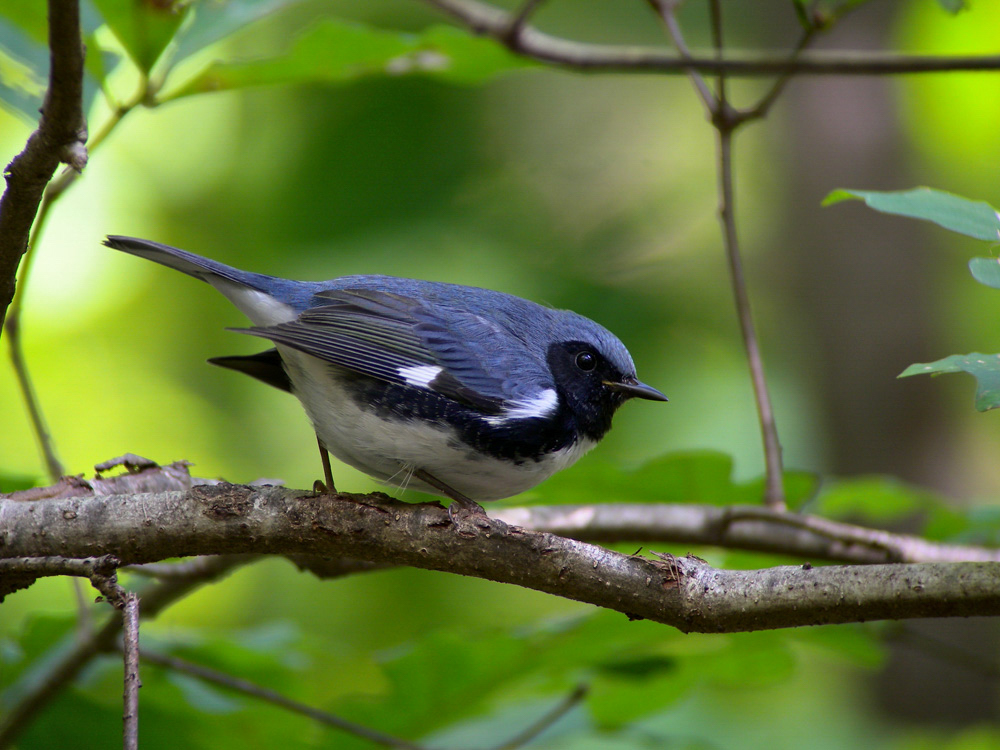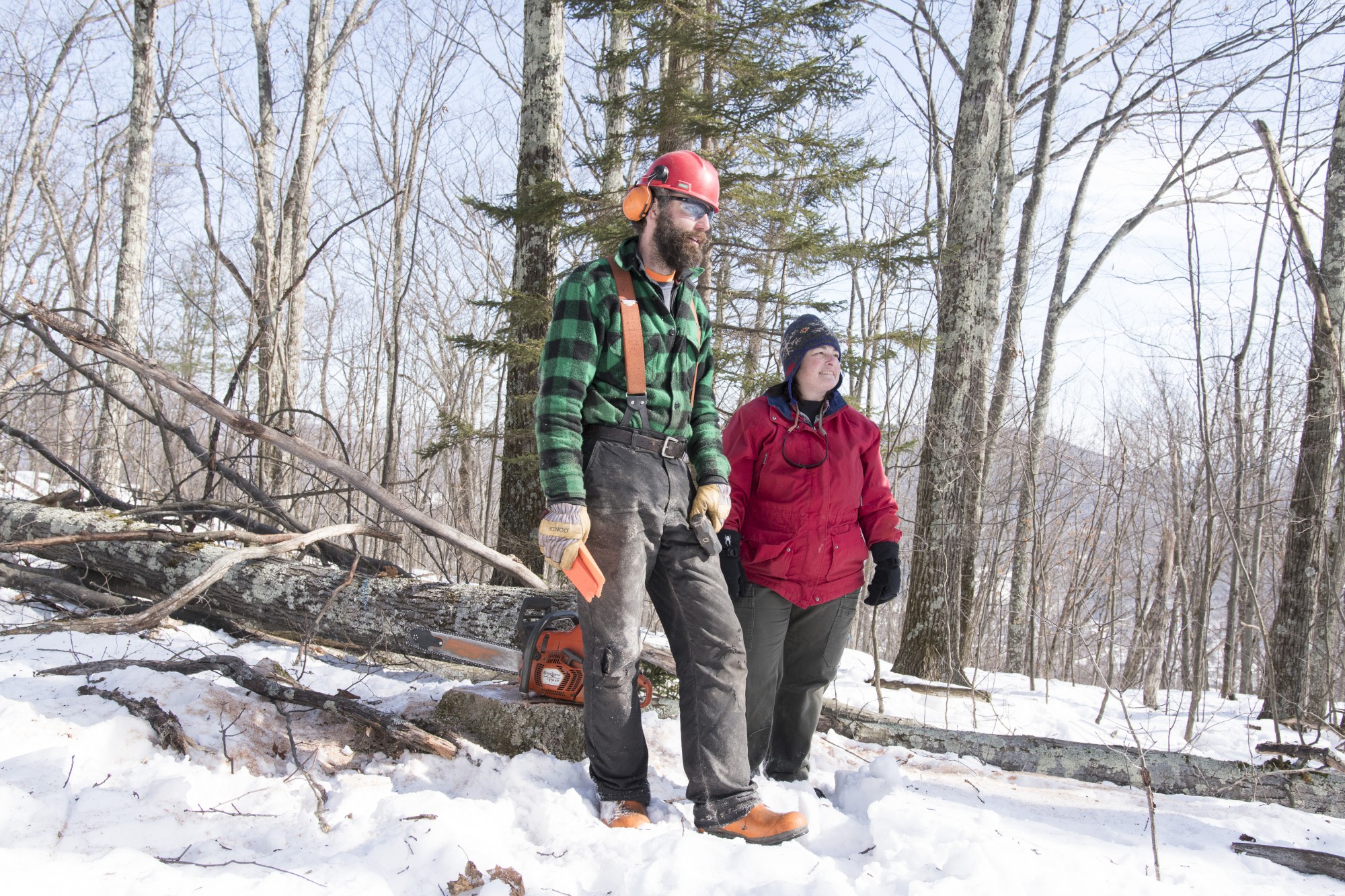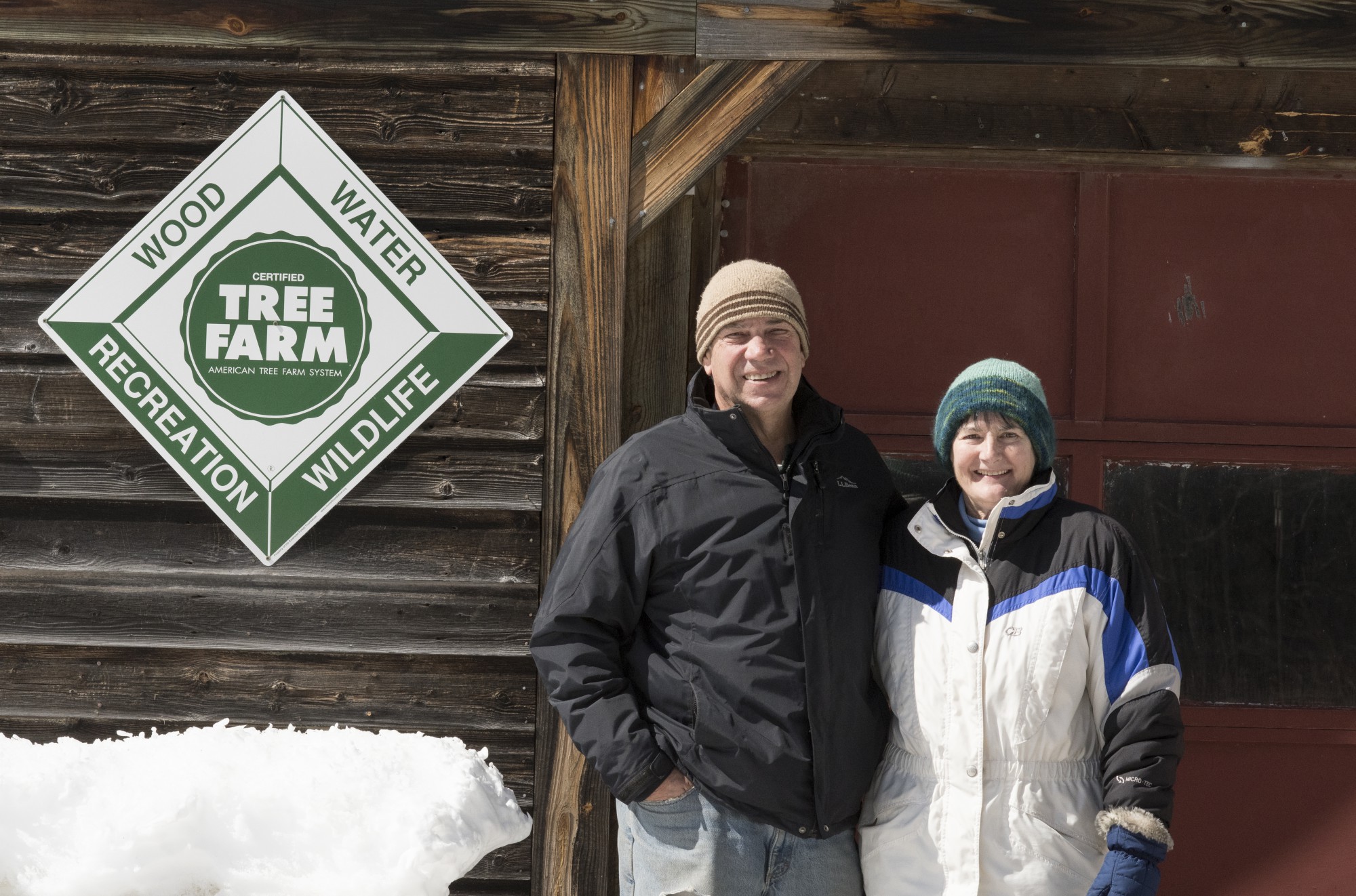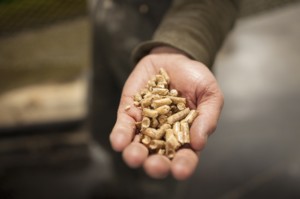Woods, Wildlife and Warblers Connects Forest Industry and Bird Enthusiasts
April 23, 2018

By Christine McGowan, Forest Program Director, Vermont Sustainable Jobs Fund
Vermont forests a critical part of global bird conservation effort
This spring, when the Black-throated Blue Warblers, Wood Thrush, and Scarlet Tanagers make their annual return to Vermont from Central and South America, they will find new habitats for nesting and breeding in Vermont thanks to the Woods, Wildlife and Warblers program– a partnership between wildlife biologists, foresters and private landowners in Vermont.
“Active and thoughtful management of Vermont’s forests is one of the best strategies for conserving bird habitat,” said Steve Hagenbuch, a conservation biologist with Audubon Vermont. “Vermont forests are a critical part of the global bird conservation effort. The birds make this incredible journey year after year, returning to the same area to raise the next generation.”

Logger Thad Premski of Black Bear Tree, Land & Forest and forester Kathy Beland survey the Stone property in Wallingford. | VSJF/Erica Houskeeper
Managing a forest for wildlife
One of the most important summer nesting habitats for migratory birds, Vermont leads the nation in birding participation, generating $123 million in wildlife watching according to a 2006 study by the Vermont Fish & Wildlife Department. But although forests cover more than two-thirds of Vermont today, that was not the case 100 years ago and past land clearing continues to impact wildlife habitat.
In the late 1800s more than 70 percent of land in Vermont had been cleared, primarily for agriculture. Over time, Mother Nature has returned the fields to forests, but a majority of trees in Vermont are in the same 60-100 year age group, not ideal for songbirds looking to nest and breed. “A healthy forest is structurally complex, with a mix of tree species and ages,” said Hagenbuch. “Downed trees, saplings, legacy trees with large canopies, and new growth are all equally important to wildlife habitat.”
“The number one reason landowners manage their forests is for wildlife,” said Ema Johnson of the American Forest Foundation. Woods, Wildlife and Warblers aims to connect private landowners with foresters and biologists to provide technical recommendations on how to enhance bird habitat as part of an overall forest management plan. These partnerships are critical to the success of the program, as about 80 percent of Vermont’s forested land is privately owned. Currently, the program has engaged with more than 500 landowners who collectively own more than 51,600 acres. Of those, 48 landowners are actively working with professional foresters and wildlife biologists to improve habitat on more than 5,000 acres of land.

Dan and Pat Stone are conducting a timber harvest on their 132-acre tree farm in Wallingford that will welcome migratory birds to their southern Vermont property for decades to come. | VSJF/Erica Houskeeper
Habitat for heat
Among those landowners are Pat and Dan Stone of Wallingford, Vermont. The Stones are conducting a timber harvest on their 132-acre tree farm that will welcome migratory birds to their southern Vermont property for decades to come. With recommendations from Audubon Vermont and local foresters Kathy Beland and Frank Hudson, their management plan includes specific instruction for increasing the structural variety of their forest, offering more opportunities for birds to nest, breed and find food. Among other strategies, the Stones are clearing small, one- and two-acre areas to make room for new growth, creating holes in the canopy to allow sunlight to reach the forest floor, and leaving downed trees and brush piles on the ground to mimic nesting conditions for certain species, such as the White-throated Sparrow.

Handful of pellets from Vermont Wood Pellet Company in Wallingford | VSJF/Erica Houskeeper
The Stone’s harvest includes the removal of softwoods such as pine, which caught the attention of Chris Brooks at Vermont Wood Pellet Company in North Clarendon. As low-grade pine is pulled out of the Stone property, the logs are transported over to Chris to be processed into premium wood pellets. The pine is hyper-compressed into wood pellets, producing a highly efficient, renewable source of local heat. In this case, the pellets will be sent just a few towns over to warm the residents of an assisted living facility.
“The Stone’s management plan is not only self-serving,” said Johnson, “it’s serving the entire community. There are a lot of jobs involved here, and the economic impact is all local.”
Vermont Forest Industry Network
Vermont’s forest products industry generates an annual economic output of $1.5 billion and supports 10,000 jobs in forestry, logging, processing, specialty woodworking, construction and wood heating. The new Vermont Forest Industry Network creates the space for industry professionals from across the entire supply chain and trade association partners throughout the state to build stronger relationships and collaboration throughout the industry, including helping to promote new and existing markets for Vermont wood products, from high quality furniture to construction material to thermal biomass products such as chips and pellets. Learn more or join at www.vsjf.org.
Featured photo credit: Black-throated Blue Warbler | Audubon|Megumi Aita




